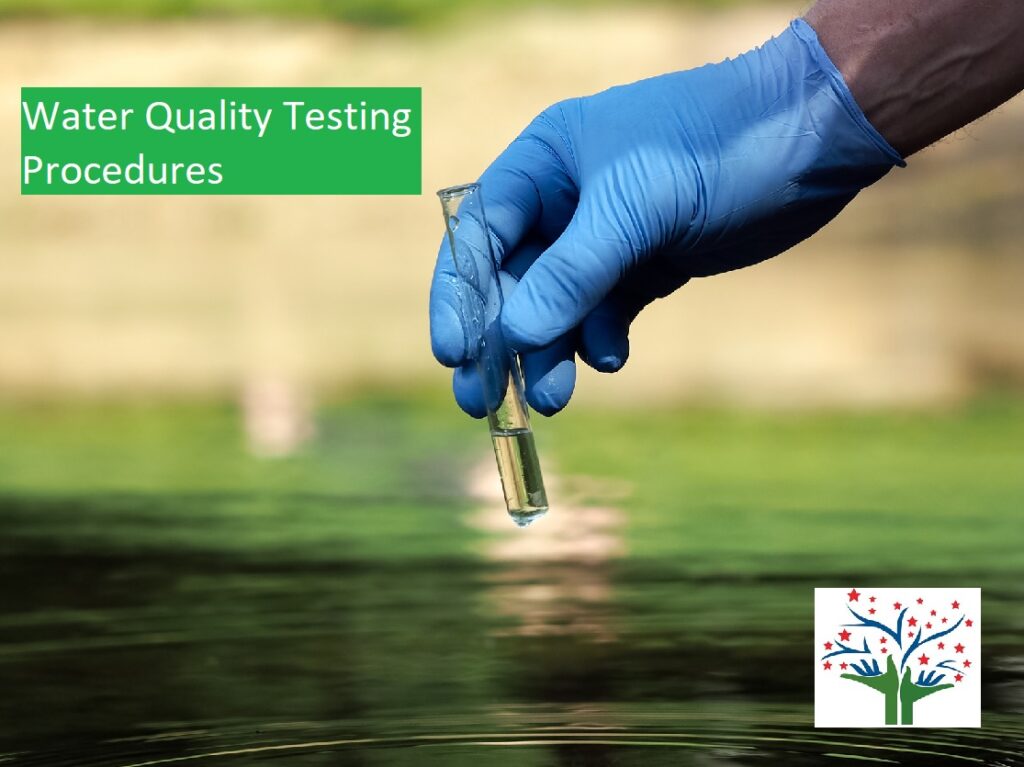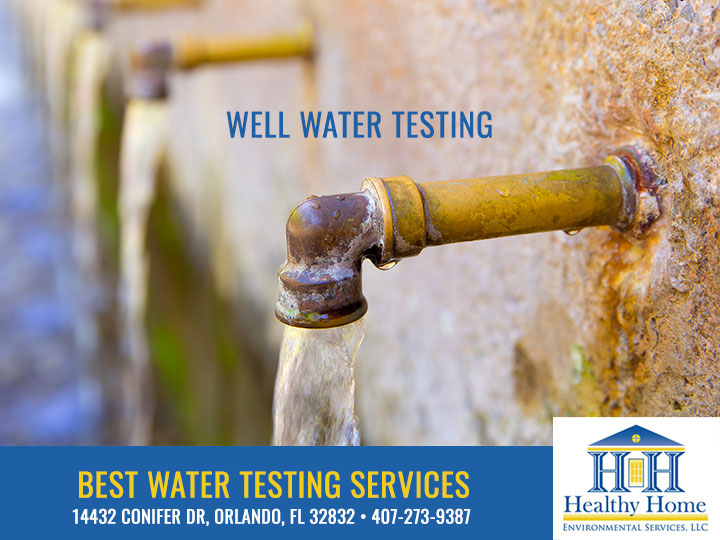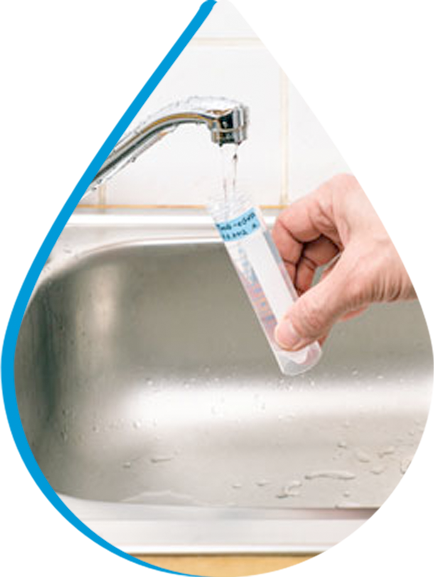Discover Trusted Water Testing Services Near Me for Clean Consuming Alcohol Water
Wiki Article
Discover What Is Included in Water Testing and Just How It Ensures Safe Drinking Water
Understanding the ins and outs of water screening is crucial in guaranteeing the high quality and safety and security of our drinking water. Via a careful exam of physical, chemical, and microbiological elements, water screening identifies possible impurities that could present wellness threats.Secret Components of Water Testing
Water testing is an important process that includes numerous key parts to ensure the safety and security and quality of alcohol consumption water. One of the main elements is the assessment of physical characteristics, including smell, turbidity, and shade. These characteristics can offer first understandings into the water's condition and potential contamination resources. Furthermore, making certain the pH balance of water is necessary, as it impacts the water's corrosiveness and the efficacy of disinfection processes.Another considerable element entails microbiological evaluation, where water samples are analyzed for the presence of microorganisms such as germs, viruses, and protozoa. This analysis is important to identify biological hazards that could position health risks if taken in. Chemical analyses are performed to spot organic and inorganic substances, such as heavy metals, nitrates, and chemicals, that may be existing in the water supply.

Detecting Dangerous Contaminants
Detecting dangerous impurities in drinking water is a fundamental aspect of protecting public health and wellness. Each kind of impurity postures distinct health risks, making their detection important to make certain the water eaten by the public is safe.
Water testing for pollutants is normally performed by regulatory companies and water energies, employing a combination of area sampling and lab evaluation. These assessments are developed to spot both naturally taking place materials and anthropogenic contaminants that might have entered the supply of water through agricultural drainage, commercial discharge, or aging facilities. Normal monitoring is necessary, as contamination levels can rise and fall because of ecological adjustments, seasonal variations, or human tasks.
The recognition of unsafe impurities educates needed actions, such as water treatment interventions or public advisories, to mitigate threats. Early detection is important to stop adverse wellness impacts, ranging from gastrointestinal illnesses to lasting problems like cancer, thus guaranteeing the continued safety of alcohol consumption water.

Chemical Analysis Methods
In the realm of making sure secure drinking water, chemical analysis methods play a pivotal function in identifying and evaluating contaminants. These techniques are important for spotting a large array of chemical compounds, consisting of heavy metals, chemicals, and industrial contaminants, which can posture significant wellness risks. Techniques such as atomic absorption spectroscopy (AAS) and inductively paired plasma mass spectrometry (ICP-MS) are typically used to measure trace degrees of steels like mercury, lead, and arsenic. These instruments supply accurate metrology, assisting in compliance with regulative criteria.Gas chromatography-mass spectrometry (GC-MS) is an additional crucial strategy, particularly for natural substances. It separates intricate mixtures and determines unpredictable and semi-volatile organic compounds, making sure that pollutants like benzene and toluene are within risk-free restrictions. High-performance liquid chromatography (HPLC) is likewise made use of for non-volatile compounds, consisting of certain pesticides and pharmaceuticals.
Ion chromatography is used to determine focus of cations and anions, such as nitrates and sulfates, which are pivotal in evaluating water top quality. These chemical analysis methods jointly ensure that alcohol consumption water remains secure by finding deviations from established purity standards, therefore protecting public health and wellness. Making certain accuracy and accuracy in these examinations is vital to preserving the stability of water safety analyses.
Microbiological Examining Techniques
Accurate microbiological screening is vital for guarding public wellness by making sure that alcohol consumption water is complimentary from dangerous virus. This procedure includes discovering and specifying microorganisms such as microorganisms, viruses, and protozoa that may pollute water materials. Common virus include Escherichia coli, Giardia, and Cryptosporidium, each posing substantial wellness dangers.A number of methods are utilized in microbiological screening to identify these threats. The membrane filtration strategy is frequently utilized, entailing water going through a filter that records bacteria, which are after that cultured to establish their presence and concentration. The multiple-tube fermentation technique makes it possible for the quantification of coliform microorganisms utilizing a collection of dilution and incubation steps.
Improvements in modern technology have introduced molecular strategies such as polymerase domino effect (PCR), which enables the rapid and extremely specific discovery of virus by magnifying their genetic product. Enzyme-linked immunosorbent assays (ELISA) also supply an approach to discover pathogens by determining particular healthy proteins or antigens.
These varied techniques are important for thorough water quality analysis, guaranteeing that water treatment processes are reliable which circulation systems keep safety and security. By using these microbiological testing approaches, potential carcinogen can be determined and mitigated without delay.

Relevance for Public Health
Guaranteeing the microbiological safety and security of drinking water directly affects public health by protecting against the spread of waterborne diseases. Microorganisms such as microorganisms, viruses, and protozoa can result in health problems like cholera, dysentery, and gastrointestinal infections (Water Testing Service). The application of thorough water testing protocols is vital in recognizing and reducing these threats, therefore guarding areas from possible episodesNormal water screening not only spots microbial impurities yet likewise assesses chemical and physical criteria that might impact wellness. For example, extreme levels of nitrates or heavy steels such as lead can position serious health and wellness risks, specifically to susceptible populations like babies and expecting females. By determining these hazards early, water testing enables prompt interventions, making sure the water system remains within risk-free consumption requirements.
Moreover, water screening plays a crucial role in keeping public self-confidence in metropolitan water systems. For plan manufacturers and health and wellness authorities, the information derived from water testing notifies decisions on facilities financial investments and public health and wellness approaches, making certain resources are directed where they are most needed.
Conclusion
Water testing serves as a vital mechanism for ensuring the safety and quality of alcohol consumption water with detailed assessment of its physical, chemical, and microbiological residential or commercial properties. By finding unsafe contaminants, such Well water testing services as heavy steels and chemicals, and using sophisticated techniques like chromatography and spectrometry, water testing promotes the recognition of potential health risks. The application of extensive screening protocols is crucial for preserving conformity with security criteria, inevitably guarding public wellness and enhancing self-confidence in metropolitan water supply.
By identifying these dangers early, water testing makes it possible for prompt treatments, ensuring the water supply stays within secure consumption criteria.
Water testing serves as an important device for making certain the security and top quality of alcohol consumption water through comprehensive examination of its physical, chemical, and microbiological buildings.
Report this wiki page